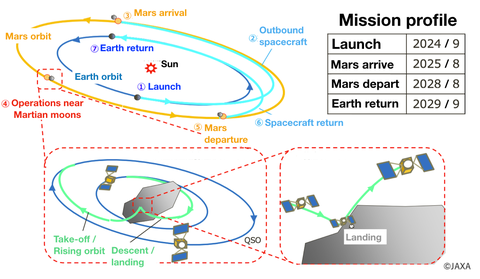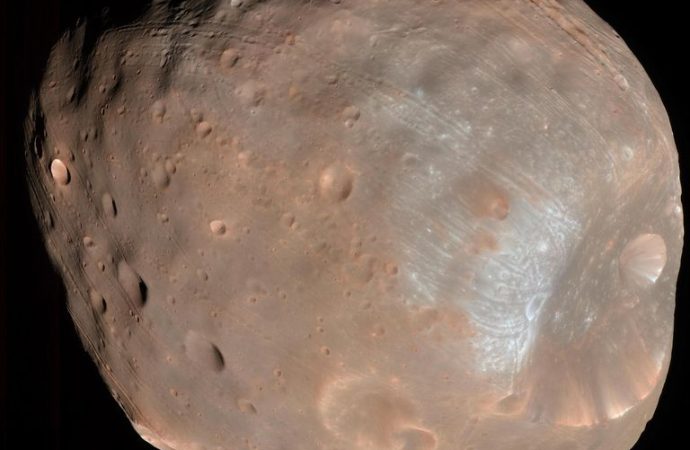The Japanese agency’s sample return mission will explore the origin of Mars’ curious moons.
Source: Popular Mechanics
A Japan Aerospace Exploration Agency mission to visit Mars’ moons Phobos and Deimos (the 13th best moon) officially got the green light from the Japanese government. The agency announced on Twitter that its Mars Moons eXploration project would be moving into the development phase.
Mars has only two moons: the larger Phobos, which is only 14 miles across and Deimos, which is just nine miles across. The mission, which will launch in 2024 and arrive at Mars in 2025 and will seek to answer a number of important questions about the Martian moon. For example, researchers have debated whether the moons were cast off the planet during a high-impact collision or are simply wayward asteroids that have been caught in the planet’s gravity.
The 11 instruments aboard will poke, prod, image, and sample the moon. If all goes according to plan, the spacecraft will land on the moon for several hours and take a 10 gram core sample from at least 2 cm below the surface, according to the agency’s press statement. In addition to the sampling device, there will also be a return capsule that will jettison the samples back to Earth.

There will also be two cameras on board—the narrow-angle TENGOO and wide-angle OROCHI— which will snap pictures of the moon’s surface, as well as the LIDAR laser altimeter, the Circum-Martian Dust Monitor, a radiation environment monitor and the Mass Spectrum Analyzer. NASA has signed on to provide a gamma ray and neutron spectrometer, which will study the elemental composition on the moon, and France’s space agency, CNES, will develop a near-infrared spectrometer, which will identify minerals that are on the surface.
Astronomers have long proposed a mission to Phobos as a precursor to any mission to the Red Planet. In 2015, the director of Solar System Exploration at NASA’s Jet Propulsion Laboratory, Firouz Naderi, suggested that a quick crewed trip to Phobos might be a nice alternative to Mars.
“Humans can realistically explore the surfaces of only a few objects and Phobos and Deimos are on that list,” NASA Chief Scientist Jim Green said in the statement. “Their position orbiting about Mars may make them a prime target for humans to visit first before reaching the surface of the Red Planet, but that will only be possible after the results of the MMX mission have been completed.”
Because of Phobos’ small size, leaving the moon would likely be a lot easier than leaving Mars. For instance, a spacecraft launching from the moon wouldn’t have to contend with a planet-sized gravity well, and less gravity means less fuel.
While a trip to Phobos may be slightly less challenging than a journey to Mars, it’s definitely not easy. Russia sent a spacecraft (lander and rover) to the moon in 1988, but it failed just before it reached the rocky body. Russia tried again to reach the Martian moon in 2011, but that spacecraft didn’t even make it out of Earth’s atmosphere.
We’re hoping JAXA fares a little better.
Source: Popular Mechanics

































Leave a Comment
You must be logged in to post a comment.